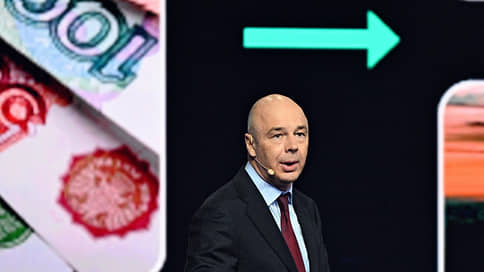In 2023, the liquid portion of the National Welfare Fund’s reserves decreased by a third
[ad_1]

Closing the federal budget deficit in December cost the National Welfare Fund (NWF) a quarter of its liquid assets, according to data released by the Ministry of Finance on Wednesday. In addition, two and a half years after refusing to store reserves in dollars and a year later – after getting rid of pounds and yens in December 2023, when financing the deficit, the Ministry of Finance was finally “freed” from savings in euros. Now, in the currency section, which has noticeably lost its degree of diversification, the “box” that more than once saved the Russian budget during the years of crisis contains only yuan and gold.
In 2023, the volume of the National Welfare Fund decreased by 10% in dollars, from $148.35 billion to $133.4 billion. In rubles, due to the devaluation of the national currency, the NWF even increased – from 10.435 trillion to 11.965 trillion rubles, that is by 15%. Note that the average ruble/dollar exchange rate in 2023, as follows from the Central Bank data, decreased by more than 25% compared to 2022, to 84.66 rubles/$ from 67.46 rubles/$, that is, a ruble increase The size of the National Welfare Fund can be considered partly arbitrary.
However, of greater interest is the change in the volume not of the entire National Welfare Fund, but of its liquid part (currency and gold), which, in fact, allows the government to quickly use savings (which, we recall, are part of the country’s gold and foreign exchange reserves) to close budget holes. Here the changes are more significant: the liquid part, even taking into account the devaluation, over the year decreased in rubles by 18%, from 6.133 trillion to 5.012 trillion rubles, and in dollars – twice as much, by 36%, from $87.19 billion to $55.88 billion rubles .
Such a significant decrease in the size of the liquid part occurred due to the use of foreign currency savings of the National Welfare Fund to close the budget deficit in December.
According to the Ministry of Finance, 2.9 trillion rubles are required for this. were received as a result of the December sale of 114.95 billion Chinese yuan in accounts with the Bank of Russia, 232.6 tons of gold in anonymized form and the last €573.7 million. Because of this, the liquid part for the month decreased by more than 25% ( as of December 1, 2023, it contained 6.747 trillion rubles). “As a result of these conversion transactions, a zero balance was formed on the account for recording funds of the National Welfare Fund in the Bank of Russia in euros,” the Ministry of Finance informed.
This means that now in the liquid part of the fund (its funds, we recall, are also invested in shares and bonds of large state-owned companies and banks, in infrastructure projects, as well as in other assets permitted by budget legislation) only gold in impersonal form and the “friendly” yuan remain (as well as a small amount of ruble balances).
Let us remind you that the process of getting rid of currencies often called “toxic” by the authorities began even before the start of the Russian military operation in Ukraine. In July 2021, the Ministry of Finance announced the completion of the conversion of the National Welfare Fund’s dollar savings into gold and other currencies. The move away from accumulating dollars was then explained by the increased threat of sanctions.
In December 2022, the fund also had no reserves in pounds sterling and yen – their balances were converted into rubles, and at the beginning of 2023, only the euro remained among the “toxic” currencies in the NWF.
Let us clarify that the withdrawal of NWF reserves from the euro is, in fact, formal. Details of the “sale” (in the terminology of the Ministry of Finance) of this currency are traditionally not given, but, according to the general opinion of experts, since assets in this currency belonging to the Russian state are frozen by sanctions, in fact they are simply transferred to the reserves of the Central Bank. In return, the Ministry of Finance receives rubles from the regulator.
But the liquid part of the National Welfare Fund is only one fifth (22%) of the total and partially frozen gold and foreign exchange reserves of Russia ($599 billion as of January 1, 2024), and the Central Bank that manages them did not report the abandonment of “toxic” currencies (in the conditions of their freezing, the exit however, it is difficult). It is unknown what the current structure of the Central Bank’s foreign exchange reserves is; the last review of its activities in managing assets in currency and gold was published before the start of the military operation, in January 2022. At that time, the share of the Central Bank’s dollar assets in the structure of reserves was 16%, and euros – 32%.
The population, we note, apparently does not fully share the idea of the “toxicity” of the dollar and the euro. As the Central Bank reported on Wednesday, net purchases of foreign currency by citizens in December alone amounted to 179 billion rubles. Almost all of this record volume was in dollars and euros, the regulator noted in its review.
[ad_2]
Source link






